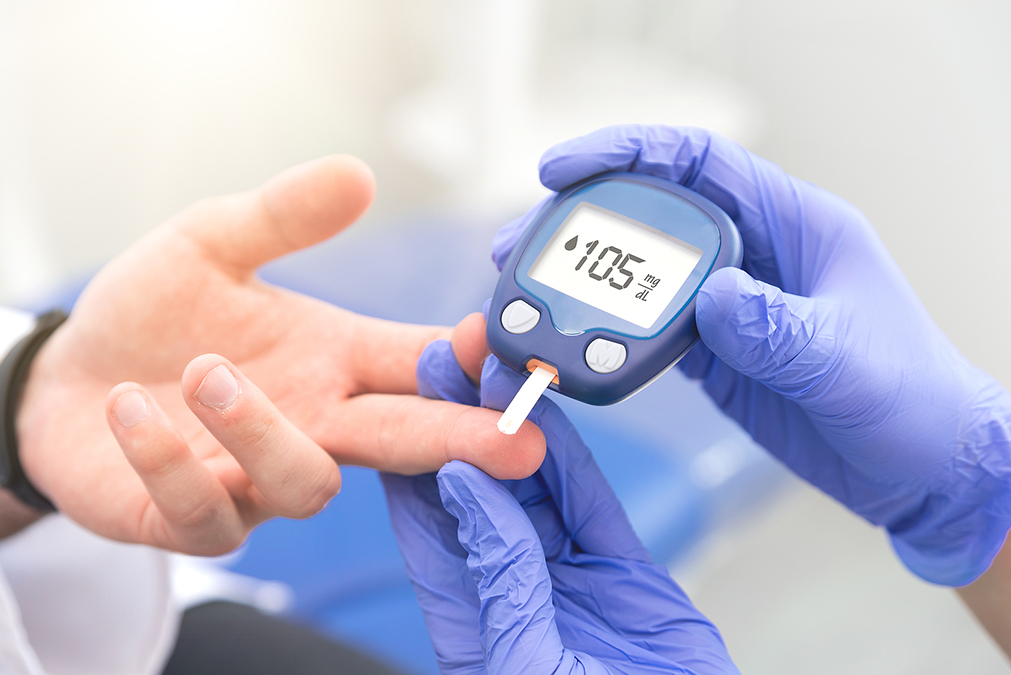 Shingles is not just a skin rash—it can become extremely painful with pain that lasts for years. As you know, it is caused by the varicella-zoster (chickenpox) virus.
Shingles is not just a skin rash—it can become extremely painful with pain that lasts for years. As you know, it is caused by the varicella-zoster (chickenpox) virus.
Type-2 diabetes is an inflammatory disease that spikes blood sugar levels.
What could these two possibly have in common?
A lot, according to a new study published in the journal Diabetes Research and Clinical Practice. And treating one disease can help with the other.
In the past, numerous studies have established that diabetes can increase our risk of infectious diseases. In a 2018 edition of BMC Infectious Diseases, for example, a Canadian study concluded that people with diabetes were 21% more likely than people with healthy glucose processing to suffer from any infection—especially skin and soft tissue infections, as well as genitourinary (in the genital and urinary organs), gastrointestinal, and respiratory infections.
Shingles, which is caused by a reactivation of the herpes zoster virus that lies dormant in our bodies, is an infectious disease, so a lot of research has been done in the past on the relationship between diabetes and shingles.
This prompted a team of French researchers to do a review of the available literature to see whether diabetes poses an increased risk for shingles and shingles complications.
They searched medical databases for studies on the relationship between the two that were published between January 2000 and December 2018 in French and English. They found 16 relevant studies of sufficiently high quality.
Of these, 11 reported that people with diabetes were more likely to develop shingles as adults, although the exact magnitude of the risk differed between studies, with some studies finding an increased risk of 6% and others finding a risk elevated by 138%.
The shingles risk was higher for women than for men and increased with age.
Not only was the risk of shingles higher for people with diabetes, but their shingles also frequently presented with complications not experienced by people without diabetes.
Postherpetic neuralgia is the most common debilitating complication of shingles, a burning pain in the skin and nerve fibers that can last for years after the rash and blisters disappear.
The literature review also found that postherpetic neuralgia was more common in diabetes patients than in the rest of the population.
And if you have type-2 diabetes, shingles is probably the least of your worries. Use these three steps to permanently reverse type-2 diabetes, starting today…

 Multiple Sclerosis
Multiple Sclerosis Banishing Bronchitis
Banishing Bronchitis Gum Disease Gone
Gum Disease Gone Overcoming Onychomycosis
Overcoming Onychomycosis Neuropathy No More
Neuropathy No More The Prostate Protocol
The Prostate Protocol Brain Booster
Brain Booster
 Ironbound
Ironbound
 Solution for Shingles
Solution for Shingles
 The Bone Density Solution
The Bone Density Solution
 The Ultimate Healing Protocol
The Ultimate Healing Protocol
 The Parkinson's Protocol
The Parkinson's Protocol
 The Chronic Kidney Disease Solution
The Chronic Kidney Disease Solution
 Overthrowing Anxiety
Overthrowing Anxiety The Fatty Liver Solution
The Fatty Liver Solution The Hypothyroidism Solution
The Hypothyroidism Solution
 The End of Gout
The End of Gout The Blood Pressure Program
The Blood Pressure Program
 The Oxigized Cholesterol Strategy
The Oxigized Cholesterol Strategy
 Stop Snoring And Sleep Apnea Program
Stop Snoring And Sleep Apnea Program
 The Arthritis Strategy
The Arthritis Strategy The Vertigo & Dizziness Program
The Vertigo & Dizziness Program The 3-Step Diabetes Strategy
The 3-Step Diabetes Strategy Hemorrhoids Healing Protocol
Hemorrhoids Healing Protocol The Erectile Dysfunction Master
The Erectile Dysfunction Master Weight Loss Breeze
Weight Loss Breeze The IBS Program
The IBS Program The Insomnia Program
The Insomnia Program The Migraine and Headache Program
The Migraine and Headache Program The Neck Pain Solution
The Neck Pain Solution The Menopause Solution
The Menopause Solution The Ejaculation Master
The Ejaculation Master The TMJ Solution
The TMJ Solution The Acid Reflux Solution
The Acid Reflux Solution The Fibromyalgia Solution
The Fibromyalgia Solution The Psoriasis Strategy
The Psoriasis Strategy